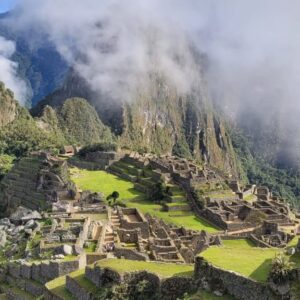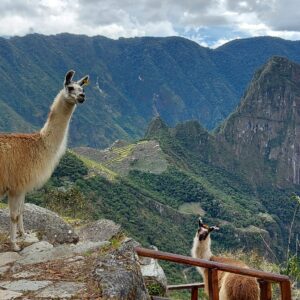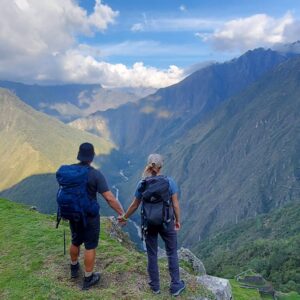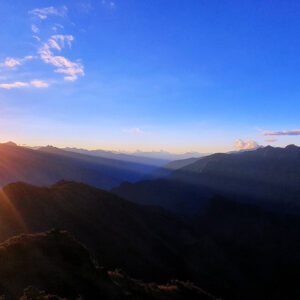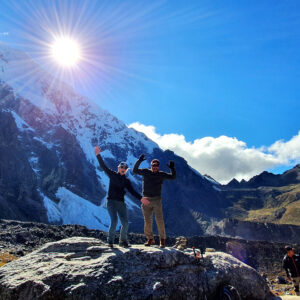Inca Trail Treks
Are you ready for an adventure of a lifetime?
Join us as we traverse the Inca Trail, a historic route that winds through the Andes Mountains of Peru. The Inca Empire once used this ancient pathway to connect their capital city of Cusco to the iconic citadel of Machu Picchu. Trekking through the Inca Trail is not only a challenging physical feat, but it is also a journey through history.
The trail is dotted with archaeological sites, stunning landscapes, and hidden gems that offer a glimpse into the rich culture and traditions of the Inca people. From the breathtaking views of the Andes to the intricate stonework of the ruins, every step on the Inca Trail is a fascinating discovery.
So pack your bags and get ready to experience the adventure of a lifetime as we embark on a journey through time and culture on the Inca Trail.
History of the Inca Trail
The Inca Trail is a 45-kilometer trek that starts in the Sacred Valley and ends in Machu Picchu. This trail was used by the Incas to travel between their capital city of Cusco and the remote city of Machu Picchu. The Incas built the trail in the 15th century, and it served as a vital transportation route for the empire until the Spanish conquest in the 16th century.
The trail was forgotten for centuries until it was rediscovered in the early 20th century. Since then, the trail has become a popular hiking destination, with thousands of visitors making the trek each year. In 1983, the Peruvian government declared the trail a World Heritage Site, recognizing its cultural and historical significance.
Today, the trail is maintained by the Peruvian government and is carefully monitored to ensure its preservation. The trail is a testament to the ingenuity and skill of the Inca people, and it offers a unique glimpse into their culture and way of life.
Trekking the Inca Trail: What to know before you go
Trekking the Inca Trail is a challenging but rewarding experience. The trail is physically demanding, with steep climbs and descents, high altitudes, and unpredictable weather. Before embarking on the trek, it is important to prepare yourself physically and mentally.
The trail can only be hiked with a licensed tour operator, and permits are required to enter. It is important to book your trek well in advance, as permits sell out quickly. The trail is closed for maintenance in February, so plan your trip accordingly.
Altitude sickness is a common problem for hikers on the Inca Trail. It is important to acclimate yourself to the high altitude by spending a few days in Cusco before starting the trek. Drink plenty of water, avoid alcohol and caffeine, and take it slow to reduce your risk of altitude sickness.
The trail can be hiked year-round, but the best time to go is during the dry season from May to September. The weather is milder, and the trail is less muddy, making for a more comfortable and enjoyable hike.
Hidden gems along the the way
The Inca Trail is more than just a pathway to Machu Picchu. The trail is dotted with archaeological sites, stunning landscapes, and hidden gems that offer a glimpse into the rich culture and traditions of the Inca people.
One of the most fascinating sites along the trail is Wiñay Wayna, a well-preserved Inca ruin that features terraces, fountains, and a temple. The site is located on a steep hillside and offers sweeping views of the surrounding mountains and valleys.
Another hidden gem is Intipata, an Inca agricultural site that features terraces, channels, and water systems. The site is located on a hillside overlooking the Urubamba River and offers stunning views of the surrounding landscape.
The Sun Gate, also known as Intipunku, is the final destination on the trail before reaching Machu Picchu. The site offers breathtaking views of the citadel and the surrounding mountains and valleys.
Regulations and sustainability efforts
The Inca Trail is a fragile ecosystem that requires careful management and conservation efforts. To protect the trail and its surrounding environment, the Peruvian government has implemented strict regulations and sustainability initiatives.
Only licensed tour operators are allowed to lead treks on the Inca Trail, and permits are required to enter. The number of permits issued each day is limited to 500, and only 200 of those permits are for hikers. This helps to reduce overcrowding on the trail and protect the environment.
Hikers are required to follow a set of rules and regulations while on the trail, including staying on designated paths, carrying out all trash and waste, and respecting the archaeological sites and natural environment.
Sustainability efforts on the Inca Trail include waste management, reforestation, and education programs for local communities. These initiatives help to reduce the impact of tourism on the trail and promote sustainable practices for future generations.
Conclusion:
Trekking the Inca Trail is a challenging but rewarding experience that offers a unique glimpse into the history and culture of the Inca people. From the breathtaking views of the Andes to the intricate stonework of the ruins, every step on the Inca Trail is a fascinating discovery.
The Inca Trail is more than just a pathway to Machu Picchu. It is a journey through time and culture, dotted with archaeological sites, stunning landscapes, and hidden gems. Machu Picchu is the ultimate destination, a mysterious and awe-inspiring citadel that has captured the imagination of travelers for centuries.
If you are an adventurer looking for a challenge and a unique cultural experience, the Inca Trail is a must-do. Pack your bags, prepare yourself physically and mentally, and get ready for the adventure of a lifetime on the Inca Trail.

